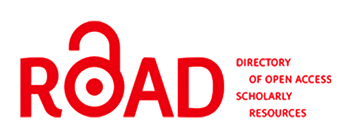Neurolinguistik Umpatan: Studi Kasus Zoonim Sebagai Julukan Manusia Dalam Konteks Pragmatik
Abstract
Abstract
This study aims to find out the neurolinguistics of zoonymic swear words as human nicknames in a pragmatic context. This study uses qualitative descriptive with a case study method to explore the use of zoonyms as human nicknames in the social interaction of Javanese society. This study uses a phenomenological approach which understands the subject's experience of a zoonymic swearing event which has become a habit thrown by the people of Gambiran Village RT 02/RW 01 every time they communicate, especially when anger arises, the speaker does not hesitate to say zonim instead of the speaker's name with an indecent name or is equated with an animal. The data collection techniques in this study were participatory observation and in-depth interviews with informants who often used or received zoony-based nicknames in interaction. The sample in this study is part of the population of the Gambiran sub-district, namely the village of Gambiran RT 02 RW0 1 whose object consists of children, adolescents, adults and the elderly. The results of this study were obtained that there were 9 zonim words (Bangke, Budeng, Bedes, Mbote metu ketigo, Tuyul, Ketek, Jaran, Nyambik, Pig, Dog). So, it can be concluded that in a pragmatic context, the speech act of the Javanese people is collapsing, one of which is in Gambiran Village RT 02/RW 01.
Keywords: Neurolinguistics, Zoonyms, Humans, Pragmatics
Full Text:
PDFReferences
Agustina, Dina. 2023. “IMPLIKASI PSIKIS KEKERASAN VERBAL DI KELAS VIII SMP NEGERI 11 KOTA BENGKULU.†PhD Thesis, UIN Fatmawati Sukarno Bengkulu.
Ayuna, Novianty Elisabeth. 2023. “Peran Komunikasi Dalam Proses Akulturasi Sistem Sosial Lokal.†Technomedia Journal 8(1):35–51.
Dananjaya, Utomo. 2023. Media Pembelajaran Aktif. Nuansa cendekia.
Degaf, Agwin. 2016. “Kata Serapan Bahasa Jawa Dalam Penggunaan Bahasa Indonesia Oleh Masyarakat Jawa: Kajian Linguistik Antropologis.â€
Harahap, Nursapia. 2020. “Penelitian Kualitatif.â€
Hidayati, Lailia Fahrunnisa, Arfiatun Astia Ningrum, Gita Ratri Utami, Zahidah Haibah, Desi Fatmasari, Wahyu Ningrum, and Asep Purwo Yudi Utomo. 2024. “Analisis Tindak Tutur Direktif Dan Ekspresif Dalam Teks Ceramah Pada Buku Bahasa Indonesia Kelas 11 SMA Kurikulum 2013.†BLAZE: Jurnal Bahasa Dan Sastra Dalam Pendidikan Linguistik Dan Pengembangan 2(1):45–67.
Hidayatullah, Efendi. 2024. “Rekonstruksi Konseptual Pendidikan Holistik: Pendekatan Fenomenologis Terhadap Inklusivitas Dan Kesadaran Sosial.†Jurnal Studi Edukasi Integratif 1(1):55–68.
Muliana, Muliana, Zikry Jawilovia, and Fatmawati Fatmawati. 2025. “Proses Pemahaman Bahasa: Analisis Psikolinguistik Otak Manusia.†Socius: Jurnal Penelitian Ilmu-Ilmu Sosial 2(6).
Nasrullah, Riki. 2024. “Neurolinguistik Dan Aspek Klinis Bahasa: Sebuah Tinjauan Awal.†Disastra: Jurnal Pendidikan Bahasa Dan Sastra Indonesia 5(2):275–91.
Ramadhani, Restha, and Pendidikan Guru Pendidikan Anak Usia Dini 2023. “TEORI-TEORI YANG MELANDASI PROSES KREATIF.â€
Sanulita, Henny. 2019. “Pemanfaatan Pendekatan Pragmatik Dalam Pengajaran Bahasa Berbasis Pemahaman Lintas Budaya.†Pp. 286–93 in Prosiding Seminar Nasional Linguistik Dan Sastra (SEMANTIKS). Vol. 1.
SUMARLAM, SUMARLAM, S. R. I. Pamungkas, and RATNA SUSANTI. 2023. “Pemahaman Dan Kajian Pragmatik.â€
Taherong, Rosmawati, Samsaifil Samsaifil, and Indri Hasnawati Wally. 2021. “KEKERASAN SIMBOLIK VERBAL PADA LINGKUNGAN PENDIDIKAN DI SMP NEGERI 3 BAUBAU.†JEC (Jurnal Edukasi Cendekia) 5(1):9–16.
Yanti, Pranowo1 Neneng Tiya Ati. 2019. “Wujud Dan Makna Pragmatik Bahasa Nonverbal Dalam Komunikasi Masyarakat Jawa: Kajian Etnopragmatik.â€
Zhuravlova, Larysa, and Oleksiy Chebykin. 2021. The Development of Empathy: Phenomenology, Structure and Human Nature. Routledge.
DOI: http://dx.doi.org/10.30742/sv.v7i1.4401
Refbacks
- There are currently no refbacks.
Recommended tools: |
| Supported by: |









